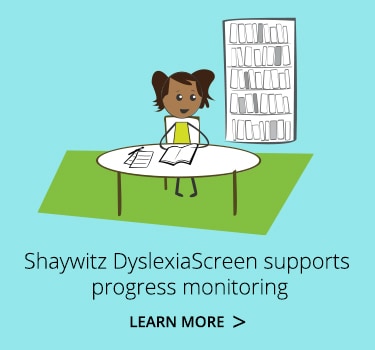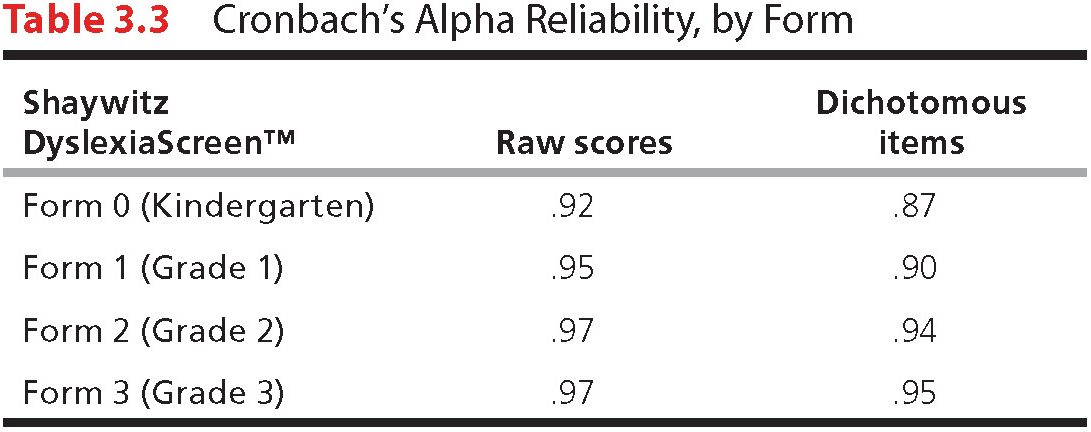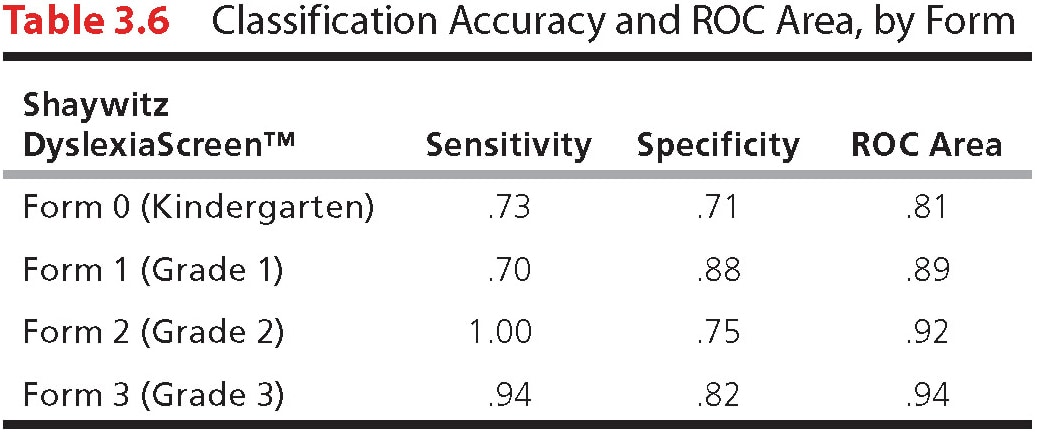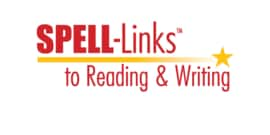Shaywitz DyslexiaScreen
- The Shaywitz DyslexiaScreen is a reliable, valid, and user-friendly screener for individuals who may be at risk for dyslexia. Using national evidence and populations with and without dyslexia, this teacher observation (for K-3) or self-rating scale offers mass screening capabilities efficiently and effectively for students in kindergarten through Grade 3, as well as adolescents and adults ages 14-65. Additionally, an empirically-validated Corrections Form supports screening in supervised populations and can be administered on paper or digitally integrated with GED testing. See our Guidance on using this assessment remotely.
Choose from our products
-
Test forms & reports
Booklets, record forms, answer sheets, report usages & subscriptions
3 options
from $1.40 -
Support materials
Manuals, stimulus books, replacement items & other materials
1 option
from $62.50 -
Training
Onsite, virtual & on-demand trainings
4 options
from $550.00 -
All products
All tests & materials offered for Shaywitz DyslexiaScreen
8 options
from $1.40
-
Shaywitz DyslexiaScreen Q-global Manual (Digital)
0150095503 Qualification Level BIncludes all forms available for the screener—K-3, Adolescent-Adult, and Corrections forms. Once ordered, the digital asset is accessible by logging into Q-global and visiting the Q-global Resource Library. It is a view-only digital file.
-
Shaywitz DyslexiaScreen Q-global Administration/Report Qty 1 (Digital)
0150095481 Qualification Level BIncludes 1 administration, score, and report for any Shaywitz DyslexiaScreen form available on Q-global—K-3 or Adolescent-Adult Forms. The Corrections Form is not available on Q-global.
-
Shaywitz DyslexiaScreen Kindergarten-Grade 3 Forms Review360 Administration/Report (Digital)
A103000257767 Qualification Level BA $300 minimum order is required for an initial purchase.
Minimum order of 215 items
-
Shaywitz DyslexiaScreen Adolescent-Adult Form Review360 Administration/Report (Digital)
A103000257766 Qualification Level BA $300 minimum order is required for an initial purchase.
Minimum order of 215 items
-
Shaywitz DyslexiaScreen On aimswebPlus Training On Demand 1 Hour*
0150021259 Qualification Level AIn this 1-hour on-demand session, participants will learn about the definition, symptoms, and neurobiology of dyslexia and how to apply this information to an assessment workflow that fits the district's needs. Participants will also see how Shaywitz DyslexiaScreen ratings can help to identify risk as well as meet state dyslexia screening mandates. Participants are eligible to earn a certificate of attendance and will have access to this course for one year. Price includes up to 30 people per session.
Training orders will be processed within 5-7 business days of order placement. On-demand training is accessed via a welcome email sent to the email address associated with the order.
*If you have purchased aimswebPlus training in the last 12 months, you do not need to purchase this training. Contact AWonlinelearning@pearson.com to request access.
-
Shaywitz DyslexiaScreen on Q-global Virtual 3 Hours
A103000072510 Qualification Level BThis 3-hour session introduces participants to the Shaywitz DyslexiaScreen on Q-global. Participants will be provided with an overview of dyslexia and the conversation around dyslexia identification. This session will also include instructions on how to navigate the platform, administer the screener, and analyze results. Price includes up to 30 people per session.
Training orders will be processed within 5-7 business days of order placement. A training consultant will contact you to coordinate your training. Training dates are scheduled no earlier than 5 weeks from order placement.
-
Shaywitz DyslexiaScreen on Review360 Virtual 1 Hour
A103000072509 Qualification Level BThis 1-hour session introduces participants to the Shaywitz DyslexiaScreen on Review360. Participants will learn how to navigate the platform and administer the screener. Teacher roles and administrator roles will be covered in this session. Price includes up to 30 people per session.
Training orders will be processed within 5-7 business days of order placement. A training consultant will contact you to coordinate your training. Training dates are scheduled no earlier than 5 weeks from order placement.
-
Shaywitz DyslexiaScreen Live Question and Answer Virtual 1 Hour
A103000072511 Qualification Level BPrice includes up to 30 people per session. This 1-hour Q&A session supports participants who have attended a previous session or are familiar with the assessment. A Pearson expert will meet with participants to address follow-up questions and support specific assessment-related needs. To use the hour efficiently, participants may submit questions in advance. Q&A sessions do not include handouts or slides.
Training orders will be processed within 5-7 business days of order placement. A training consultant will contact you to coordinate your training. Training dates are scheduled no earlier than 5 weeks from order placement.
Overview
- Publication date:
- 2016, 2017, 2018, 2021
- Age range:
- Grades K-3, Adolescent-Adult, Corrections
- Qualification level:
- B
- Administration:
- Digital only (Paper administration option for Corrections)
- Scoring options:
- Q-global®, Review360, or aimswebPlus, and GED platforms
- Telepractice:
- Guidance on using this test in your telepractice
Product Details
Offering strong validity, reliability, and time savings, the Shaywitz DyslexiaScreen is an excellent tool for early identification of individuals at risk for dyslexia.
Shaywitz DyslexiaScreen, developed by Dr. Sally Shaywitz, is a brief rating form of observed reading-related behaviors by teachers of children K-3, or by self-report in Corrections and for adolescents and adults. It was normed as part of a larger longitudinal study (the Connecticut Longitudinal Study) that began in 1983, and nationally validated by Pearson prior to publication. This collective research provides a strong evidence base for results you can trust.
The Shaywitz DyslexiaScreen emphasizes phonological, linguistic, and academic performance from teacher observations or, in the case of adolescents and adults, from self-ratings of past and current performance.
Benefits
- Identify dyslexia risk quickly and easily administration in just a few minutes per rating.
- Screen individuals or groups as well as individual and group reporting.
- Easily interpret and communicate results using simple classifications (e.g., “At Risk for Dyslexia” or “Not At Risk for Dyslexia”).
- A teacher-friendly (K-3) or self-report (Adolescent-Adult/Corrections) rating form.
- Digital administration and scoring, integrated with larger Pearson systems.
- Good to Excellent levels of sensitivity, specificity, and AUC based on Sally and Bennett Shaywitz Connecticut Longitudinal Study and Pearson validation studies.
- Provide support for families as they work on language-based skills critical for reading success.
Content & Features
Currently, the Shaywitz DyslexiaScreen includes six individual forms across the age range. For Grades K-3 (Forms 0-3), a teacher completing Shaywitz DyslexiaScreen rates statements regarding a student's language and frequency of academic behaviors. For Adolescent-Adult and Corrections Forms, the individual self-rates. The Shaywitz DyslexiaScreen includes four forms:
- Form 0 is for teachers of students ages 5:0 through 6:11, typically in kindergarten, and consists of 10 items.
- Form 1 is for teachers of students ages 6:0 through 7:11, typically in Grade 1, and consists of 12 items.
- Form 2 is for teachers of students ages 7:0 through 8:11, typically in Grade 2, and consists of 10 items.
- Form 3 is for teachers of students age 8:0 - 9:11, typically in Grade 3, and consists of 10 items.
- The Adolescent-Adult Form is for individuals age 14-65 and consists of 10 items.
- The Corrections Form is for incarcerated individuals age 18-65 and consists of 10 items.
Users & Applications
The Shaywitz DyslexiaScreen can be used by many different professionals and in various settings. Because of the nature of the screener, classroom teachers play a key role in completing forms and evaluating daily student skills and achievement in school settings. In addition, special education teachers, speech-language pathologists, psychologists, occupational therapists, reading specialists, educational diagnosticians, and other qualified professionals screen individuals for dyslexia.
Key applications for the Shaywitz DyslexiaScreen include:
- Universal screening, in compliance with state dyslexia screening mandates or strategic mass screening efforts
- Targeted screening, where literacy benchmarks show overall academic risk in reading, or key at-risk populations can be screened
- Individual screening, as part of an overall evaluation process or as a first step in evaluation or intervention planning
Psychometric Information
While many tools and resources may use the label "dyslexia screener," only those tools with appropriate psychometric rigor and process do so accurately. Read more.
The Shaywitz DyslexiaScreen was developed and normed initially with evidence from the Connecticut Longitudinal Study that Dr. Shaywitz began in 1983. Subsequently, Pearson completed additional validation studies in 2016 (Grades K and 1), 2017 (Grade 2), 2018 (Grade 3), and 2019 (Adolescent-Adult and Corrections).
Results from the Connecticut Longitudinal Study and the national validity studies provide substantial support for the reliability, validity, and clinical utility of the Shaywitz DyslexiaScreen. The test manuals include demographic breakdowns of each sample across grades as well as validity measures (e.g., portions of the WIAT-III®).
Tables 3.3, 3.6, 4.1 and 4.5 show reliability data and classification accuracy data, respectively, across forms.
There's more to learn
Ask questions of your sales representative
Overcoming Dyslexia, Second Edition
Dr. Shaywitz has released a 2nd and completely updated edition of her well-known book, Overcoming Dyslexia. Review and purchase on Amazon.com or the publisher's website, Knopf Doubleday.
Want more updates from us? Stay in the know! or use our Contact Us form to find out how you might implement the Shaywitz DyslexiaScreen in your organization.
Where is the Shaywitz DyslexiaScreen available?
At this time, the screener is available in the United States, Canada, Australia/New Zealand, United Kingdom, and India. Please visit the country-specific Pearson websites for ordering information and customer support.
Sample Reports
Shaywitz DyslexiaScreen on Q-global
Individual reports include a student's standard demographic information, risk level, and an interpretive statement. Group reports include all students' risk levels listed by examinee ID or last name.
Shaywitz DyslexiaScreen on aimswebPlus
Shaywitz DyslexiaScreen on Review360
Resources
The following resources are available for Shaywitz DyslexiaScreen.
FAQs
Select a question below to see the response.
General Questions
Yes. Many state laws require annual screening in early grades. In addition, screening annually in early years increases the power of the results of the screener over time.
In the manual, we recommend waiting at least 6-8 weeks from the start of the school year for any form of the screener, so that the teacher-rater has time to get to know the student academically and have enough classroom performance examples to rate confidently. More broadly, given the widely variable preschool experience of Kindergarten students, it may be advisable to wait longer into the school year, even after the mid-year break, to allow all students to have access to quality instruction prior to screening. Organizational factors and external constraints may also play a role in determining the best timing for this grade. Conversely, waiting too long in the Kindergarten year may miss the opportunity for more explicit and structured instruction in Kindergarten for students at risk for dyslexia. Balancing all these factors is key.
Schools and school districts are able to purchase this tool, as is our typical process. For individual purchases, users must be Level B qualified. Some teachers may be Level B qualified, some may not.
Dr. Shaywitz and Pearson agree that classroom teachers are those professionals closest to the student academically. They are the best responders to academic performance related to reading for this screener. When Dr. Shaywitz developed the screener based on her long-standing data set, she specifically crafted the items for teachers. She wanted the best evidence to come from teachers who can respond to questions about student performance in the classroom environment.
Administering a screening program includes identifying appropriate students to screen, whether a universal student population or a subset of students, and ensuring that the screening program is administered with fidelity. Those who administer screening programs also must train examiners appropriately, interpret results correctly within the limits of the scope of the screening tool, and disseminate results appropriately to various stakeholder groups. Those professionals who are trained in appropriate and ethical management of assessment tools are called, in Pearson terms, Level B qualified users. There are multiple scenarios in which a professional may be Level B qualified. Please refer to our user qualifications page on our website. Both Dr. Shaywitz and Pearson are committed to our ethical responsibility that tools we publish are used appropriately, on behalf of students and their families.
Recommendations about what to do next following screening require a collaborative approach between professionals from different disciplines and often across general and special education perspectives.
Great question. Around the world, each grade and the expectations of student performance vary. As we publish the Shaywitz DyslexiaScreen in other countries, we needed to give each country the flexibility to assign the appropriate grade level to each form, based on the local education system and the local research on the screener.
Content Questions
The results for children who are considered "out of level" are not necessarily invalid and may be interpreted by qualified practitioners. If a child's age is outside the typical age range associated with his or her grade level, Q-global alerts the user by providing a message window entitled, "Invalid Assessment Record(s)." The error message indicates the age levels typically associated with the form and advises the use of caution when interpreting results.
The Shaywitz DyslexiaScreen utilizes a cut score norm, which provides a reference point for each form to divide the data set into two groups: At Risk for Dyslexia and Not At Risk for Dyslexia. The teacher ratings must exceed the cut score in order to classify a student as At Risk for Dyslexia.
Unlike traditional normative samples that must be sufficiently large and representative of the population to establish a normal distribution of scores, a cut score norm only requires a representative sample of the two target groups: in this case, students who are At Risk for Dyslexia and Not At Risk for Dyslexia. The Shaywitz DyslexiaScreen cut scores are based on a sample of 414 schoolchildren who participated in the Connecticut Longitudinal Study that began in 1983 and continues to the present day. In contrast to traditional normative samples that are collected within one year or less, the Shaywitz normative sample has been followed over three decades from school entry into early adulthood. The longitudinal research design has allowed Dr. Shaywitz to detect measurable changes in reading performance and risk classification over the course of each student’s academic career, strengthening the reliability and validity of the Shaywitz DyslexiaScreen risk classification in the early grades.
To confirm that the cut scores remain valid and reliable across samples, 115 children between the ages of 5 and 7 participated in a national validity study in April through July 2016. For the kindergarten and grade 1 forms, 115 students (i.e., 50+ at each grade) offered the statistical power needed for the psychometric analysis of the data set. The results of this national validity study indicated that the reliability coefficients and clinical sensitivity and specificity results were similar to those derived from the Connecticut Longitudinal Study. These findings support the use of the Shaywitz DyslexiaScreen for identifying children with dyslexia and suggest that the teacher ratings that indicate risk for dyslexia remain consistent over time. Additional Grade 2 and Grade 3 validation studies were conducted in 2017 and 2018, respectively, in the same way with similar results.
Certainly, individuals with dyslexia often have family members with similar (but not always) struggles in reading, writing, and/or spelling related to dyslexia. Further, many individuals, through an assessment process, show lower than average performance on one or more RAN tasks.
That said, the data set behind the screener did not provide the evidence strength needed to include items related to these two areas in the screener itself. In addition, family history may not always be available and therefore makes it difficult to require in a screening process.
Yes. Dyslexia is not language-specific; it crosses alphabetic and logographic writing systems. Further, a screener does not diagnose. The goal of any screener is to sort reliably individuals who are "at risk" vs. those who are "not at risk." Any positive classification of "At Risk for Dyslexia" on the Shaywitz DyslexiaScreen, whether from a student who is also classified as ELL or not, should be followed by a secondary measure or measures to establish whether or not the student actually has dyslexia. In the case of a student who is an ELL, if dyslexia exists generally it will present in English and in the student's primary language(s), depending on the language(s) and age of the student. View Dyslexia & ELLs
The Connecticut Longitudinal Study focused on a cohort of hundreds of children, not teachers. The study followed, and continues to follow, this cohort of children into adulthood. The study, as part of its protocol, gathered data from teachers who may or may not have had specific training on dyslexia--it simply asked questions of teachers of these children in the cohort about the nature of each child's academic and classroom performance, which any teacher can do once they have time in the classroom to observe a student's work. In addition, each year a full assessment battery was also given to each child in the cohort.
The Shaywitz DyslexiaScreen items were derived from an empirical analysis of teacher response data and assessment scores over time. Then, the screeners' items were field tested by a range of classroom teachers, who also had a wide spectrum of knowledge regarding dyslexia--no formal dyslexia training was provided by the study over the years nor during the field testing of the items. In fact, the items were designed to be completed by teachers who had very little or no understanding of dyslexia. While training in dyslexia is not required or necessary for a teacher to complete the screener, Dr. Shaywitz and Pearson clearly advocate for the training of all teachers in the science of dyslexia.
The issue of strengths and weaknesses in a profile of dyslexia is such an important topic! The evidence is clear that reading is primarily a language-based effort, as opposed to a purely cognitive/metacognitive effort, for example. The tasks of word-level decoding and reading comprehension (i.e., tasks of written language) require a number of linguistic skills to accomplish--knowledge of sounds, letters, and words/word parts, which are all part of the linguistic code and together carry the meaning needed for comprehension. A recent article by Hugh Catts and colleagues describes students with dyslexia who have strong *oral (*i.e., semantic or phonological) language skills (seen as a "protective factor") and students with dyslexia who have weak *oral *language skills (seen as a "risk factor"). An example of low oral language skills might be students who receive preschool speech-language services for oral language skill development and then ended up being diagnosed with dyslexia once into elementary school. They may not have average or better oral language skills at the time of the dyslexia diagnosis. In fact, their risk for dyslexia could have been predicted much sooner--not just with oral language performance, but along with other factors in a hybrid model--than a typical 3rd grade dyslexia assessment. So while dyslexia is indeed a language-based disorder, the profile of language skills among those with dyslexia is not homogeneous.
Here's a link to the Catts, et al abstract, if you are interested: http://link.springer.com/article/10.1007/s11145-016-9692-2
Unfortunately, any professional making erroneous or inaccurate ratings to positively or negatively influence the outcome of an assessment is nothing new in the world of testing. This would be an ethical violation in the use of tests and test content under a professional code of ethics.
Beyond the psychometric and research evidence, the Shaywitz DyslexiaScreen items were developed based on direct teacher feedback and support to create the clearest and easiest way possible to rate student performance. Supporting Teacher Guides further illustrate the use of the item's content. The validity and reliability data are accurate and defensible. All assessments, including all rating scales like this screener, have a margin of error factored into the responses of those who complete the forms.
Further, administrators of a screening program can provide a check and balance. Prevalence data from the literature and our own research have confirmed that up to 20% of a typical school classroom could be flagged as "at risk" for dyslexia. If a class percentage of risk status is higher than that, it may require follow-up to understand why the risk status was higher. This is a powerful use of the group report, if it is needed.
Finally, the power of this tool is in its ability to function as a mass triage system--you cast a wide net and gather students who may be at risk. The value is in the combination of speed and breadth for finding students at younger grades faster than is typical in the world of education to date. Certainly, a few students who are flagged as "at risk" will end up not having dyslexia upon further assessment. They may need something else, or nothing beyond excellent Tier 1/general education instruction. This is just step 1 of the overall "find and serve those with dyslexia" effort.
Technical Questions
If you are already a Q-global user and want to screen a single student or a small group of students, Q-global is your best choice. If, however, you are planning to screen a percentage of students across a grade or literally screen every student in the grade, then you want to choose Review360 or aimswebPlus, which will give you both mass screening capabilities--including administrator dashboards, teacher progress indicators, and rostering support--and robust and flexible reporting tools for aggregated and disaggregated reporting across the district.
Use the PDFs below to guide you through the getting started and screening process. Select the documents that are best suited to your needs: K-12 organizations or non-education organizations.
K-12 Education Organizations
- Implementation Checklist for K-12 Organizations
This document is best suited for the K-3 Forms and those using the Adolescent-Adult Form within K-12 education settings. - Shaywitz DyslexiaScreen on Review360 FAQ for K-12 Organizations
Non-K-12 Organizations
- Implementation Checklist for Non-K-12 Organizations
This document is best suited for the Corrections Form and those using the Adolescent-Adult Form outside of K-12 education settings. - Shaywitz DyslexiaScreen on Review360 FAQ for Non-K-12 Organizations
- Implementation Checklist for K-12 Organizations
Webinars
The following training events are available for Shaywitz DyslexiaScreen.










